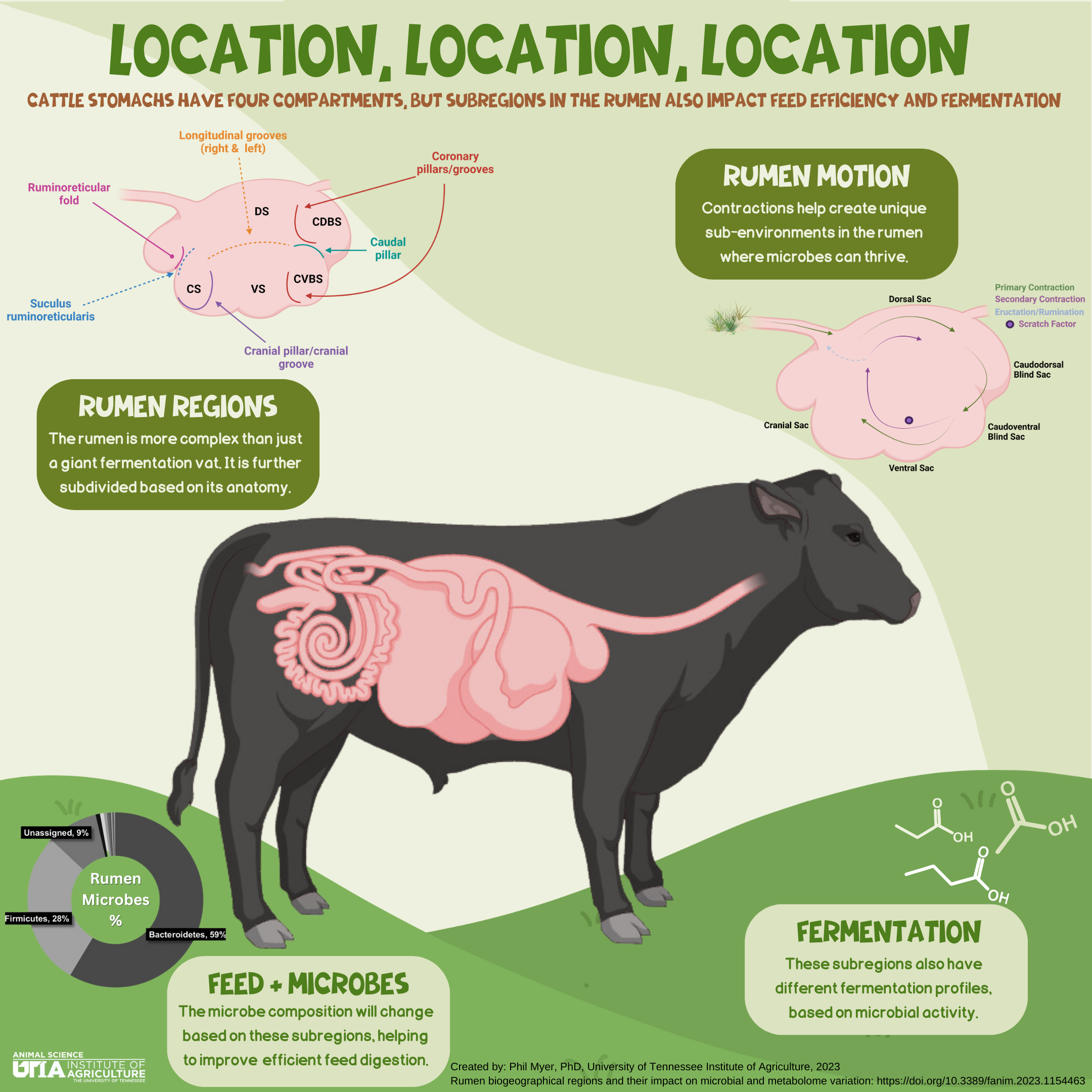
Bacterial Communities in the Rumen Vary by Location
The rumen is a complex organ, separated into five distinct rumen sacs due to anatomical structure and variable host tissue physiology. Research has shown that each rumen sac may differ in its microbial and fermentative capabilities. Check out our group’s research article for more information on the rumen sacs and microbial variation!
Read our review article to also learn more about the rumen, its anatomy, and its microbes!
For additional information, please contact Dr. Phillip Myer.

This work is supported by the Agriculture and Food Research Initiative Competitive grant no. 2020-67015-30832 / project accession no. 1021775 from the USDA National Institute of Food and Agriculture.